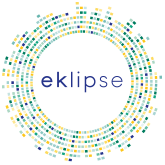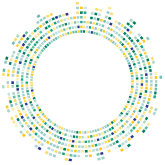Timeline
- Date request received: 30/09/2016
- End of Call for Knowledge (CfK): 08/04/2017
- End of Call for Experts (CfE): 25/06/2017
- Date of experts selection: 07/07/2017
- Date of first Expert Working Group (EWG) meeting: 08/2017
- Date of the first meeting with the requesters and EKLIPSE Knowledge Coordination Body (KCB) and Methods Expert Groups (MEG): 02/02/2017
This report is the outcome of a direct policy request from IUCN and the Swedish Board of Agriculture in September 2016 and was developed by invited experts that joined the EWG. This work is to promote the wider adoption of measures with demonstrable socio-ecological positives for biodiversity, society, and farmers; whereby the “label” of the final intervention (be it greening or agricultural environment and climate measures) is not the most important aspect, but rather the objective and effects of implemented measures.
Scoping phase
This initial request was entitled “What are the effects of CAP greening measures on biodiversity and related ecosystem services?”
In order to refine the request, scoping activities have been carried out :
- Call for Knowledge to identify already existing work on the request. It was launched in March 2017 inviting scientists, policy-makers, practitioners, and other societal actors to share their knowledge on the topic.
- A stakeholder workshop (26th April 2017, Brussels) with other participants involved in European policies and biodiversity issues to ensure the policy relevance of the request detailed below and to refine the request.
Based on the results of the stakeholder workshop and the Call for Knowledge, it was agreed to refine the request question: Understanding Farmer Uptake: What measures are most promising to deliver on supporting biodiversity and ecosystem services in the next round of the Common Agricultural Policy (CAP)? Especially the question of uptake of measures seemed to be the most adequate for the work of an EKLIPSE EWG.
During the scoping phase, the EKLIPSE MEG and the KCB Agri group discussed potential methods of knowledge synthesis which can be applied to this request, and they proposed an integrated framework to be carried out by the EWG (see the DoW). This included the following methods:
- Summary of reviews
- Non-systematic literature reviews
- Focus groups with extension agents or farmer groups, and
- Delphi process, synthesis evaluation matrix, or Bayesian belief network.
The Document of Work (DoW) described the results of the scoping activities as well as the background of the request and was the basis for the call for experts.
Answering the request
Selection of an Expert Working Group
EKLIPSE sent out a Call for Experts (CfE.2/2017) in May 2017 inviting various kinds of societal actors to apply to join an Expert Working Group to answer the question: Understanding Farmer Uptake: What measures are most promising to deliver on supporting biodiversity and ecosystem services in the next round of the Common Agricultural Policy (CAP)?
The EWG (see above) was established with a focus on Ecological Focus Areas (EFAs), a policy instrument introduced to the CAP in the period 2014 – 2020, who broadened this remit also to consider evidence from other measures. The EWG gathers 12 European experts covering nine countries (Czech Republic, Denmark, Finland, Germany, Greece, Hungary, Spain, Sweden, UK):
Methods protocol
In December 2017, the expert group had elaborated their draft method protocol to assess the uptake of agricultural policy measures that improve biodiversity. The review of this draft protocol was public and has been broadly disseminated. Anyone was free to comment or give the expert group feedback.
The review process resulted in 8 individuals or organisations giving feedback on the draft protocol. The expert working group worked hard to include as many relevant comments as possible. The final methods protocol was finalised in November 2017.
The suggested knowledge synthesis framework is based on three main parts derived from the request and adapted by the EWG (Fig. 1):
A. Compile a list of biodiversity measures (EFAs as well as other measures that are proven to enhance biodiversity in farmland effectively) and a summary of the evidence that these options contribute to biodiversity:
a. review the summary of evidence that these specific measures work,
b. understand which measures are the most effective for biodiversity with consideration to different farming/geographic/management conditions
c. list other important aspects affecting the ‘effectiveness’ of measures.
B. Assess factors that influence the uptake of these interventions under existing and potential future contexts. Both administrative and socio‐economic factors should be analysed:
a. at the EU level
b. at MS or other relevant sub-level
c. at farm level
C. Provide recommendations to improve the delivery and uptake of the measures, and thus the benefits for biodiversity. The recommendations should address at least European and MS levels.

Figure 1: Suggested knowledge synthesis framework to be used to address the request. Step B will be addressed at three different levels. *The MS-level (B2) differs between MS and can in some cases include sub-levels (such as the federal state level in Germany).
The specific research questions considered in this project are:
- Which of the measures available to farmers through the CAP are most beneficial for biodiversity? (Step A)
- What are the factors influencing the design and selection of these measures at the EU level? (Step B1)
- What are the factors influencing the selection of these measures by different Member States (MS)? (Step B2)
- What are the factors influencing the selection of these measures by farmers? (Step B3)
- How can improved uptake of these measures be achieved in the future? (Step C)

Figure 2: Overall methodological framework visualizing the data flow (arrows) between the different steps, sub-steps, and methods used in this project. The scenarios developed in step B will be integrated into the assessment of factors affecting uptake by MS (interviews) and farmers (focus groups and agent-based models). Scenarios will be developed based on input from a) a review on effects of different interventions on biodiversity (step A), b) a review on factors influencing farmers uptake and c) statistics describing current measures’ implementation (both step B). The combined output from all methods used in step B will feed in the recommendations developed in step C.
Finalization
The expert group completed their draft report in early November 2018, which was opened for consultation through an external expert review and public consultation. In June 2019 the final report on “understanding farmer uptake of measures that support biodiversity and ecosystem services in the Common Agricultural Policy (CAP)” was finalised and published.







